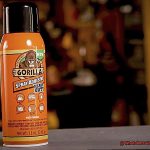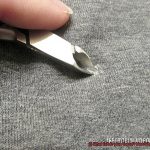Do you ever find yourself in a sticky situation, literally? When it comes to gluing things together, epoxy glue is the go-to adhesive for many DIY enthusiasts and home improvement gurus. Why? Because it’s known for its unmatched bonding abilities. But before you dive into using it, you need to know what surfaces epoxy glue can stick to.
Epoxy glue is a two-part adhesive consisting of a resin and hardener. Once mixed together, the resulting chemical reaction creates an unbreakable bond that’s strong and durable. You can use this super glue on various surfaces such as wood, plastic, metal, and even glass. However, not all surfaces are created equal – some may require special preparation before applying the adhesive.
In this blog post, we’re going to explore everything you need to know about what epoxy glue can stick to. We’ll cover the best practices for preparing surfaces and share some tips and tricks for ensuring a solid bond. Whether you’re renovating your home or fixing a broken item, epoxy glue has got your back when it comes to achieving a long-lasting bond. So let’s get started.
What is Epoxy Glue?
Contents
Epoxy glue is a powerful adhesive that can bond almost anything. It’s composed of two parts: resin and hardener, which when mixed together, create a chemical reaction that results in a strong and durable bond. This adhesive is known for its versatility as it can bond to a wide range of materials including metal, wood, plastic, glass, ceramics, and even some types of fabric.
One of the key benefits of epoxy glue is its resistance to impact, vibration, and temperature changes. It’s also waterproof and resistant to chemicals and solvents. These properties make it an ideal choice for applications that require a robust and long-lasting bond.
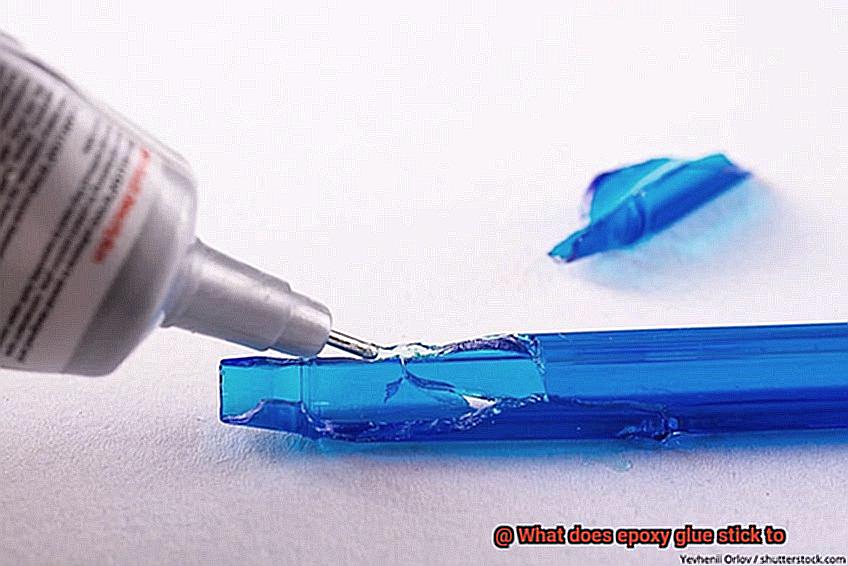
However, surface preparation is essential when using epoxy glue. The surfaces being bonded must be clean and free from any debris or contaminants to ensure maximum adhesion. Roughening up the surfaces with sandpaper or a wire brush will create an even better bonding surface.
When applying epoxy glue, it’s crucial to follow the manufacturer’s instructions carefully. The two components must be mixed in the correct proportions and applied within a specific timeframe before the glue sets. Any disturbance during the curing time can weaken the bond.
Epoxy glue is perfect for various applications such as construction, automotive, and DIY projects. Here are some materials that epoxy glue can stick to:
- Fiberglass
- Concrete
- Stone
- Marble
- Granite
- Brick
- Leather
- Vinyl
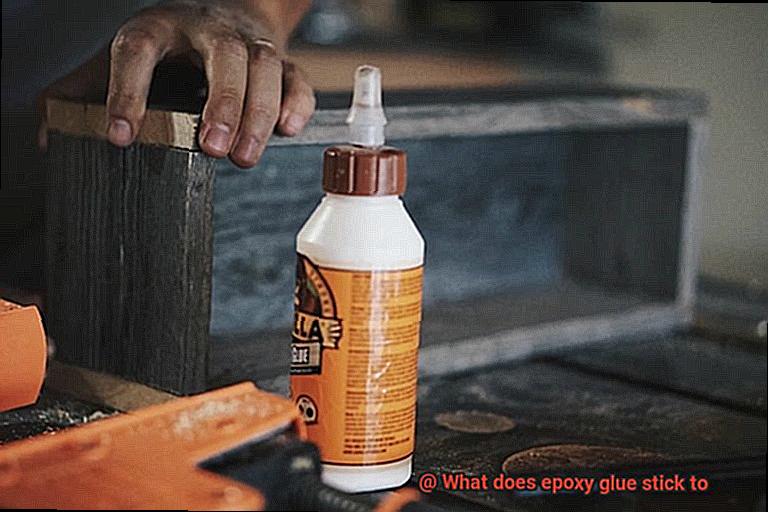
What Materials Does Epoxy Glue Bond to?
Look no further than epoxy glue. As a bonding expert, I can tell you that epoxy glue is composed of two parts, resin and hardener, which create a bond that is unbreakable. But what materials can this mighty adhesive bond to? Let’s explore the answers.
Epoxy glue is a versatile adhesive that can bond to a wide range of materials, including metals, plastics, glass, wood, and ceramics. The key to its bonding capabilities lies in its ability to penetrate the surface of the material it is bonding to and create a strong chemical bond. Its strength and durability make it an ideal choice for many applications where a strong bond is required.
When it comes to metals, epoxy glue can bond to stainless steel, aluminum, brass, and copper. It is also effective at bonding plastics such as PVC, ABS, polycarbonate, and acrylics. Whether you’re repairing an automotive part or fixing a broken plastic item in your home, epoxy glue can provide the solution.
For glass or ceramics repairs, epoxy glue creates a strong bond that is resistant to moisture and heat. This makes it an ideal choice for repairing chipped or cracked dishes or fixing broken ceramic figurines. However, when bonding to wood or concrete surfaces, it’s essential to ensure the surface is clean and free from any oils or other contaminants that may interfere with the bonding process.
Cleaning the Surfaces Before Applying Epoxy Glue
To ensure a strong and unbreakable bond between materials, it’s crucial to properly clean and prepare the surfaces before applying epoxy glue. As an expert in this field, I can confidently say that a little bit of prepping can go a long way.
Here are some key points to keep in mind when preparing your surfaces for epoxy glue:
- Remove Loose Debris: Before anything else, use a brush or compressed air to remove any dirt, dust, or loose particles from the surfaces you plan to bond. This will help prevent contaminants from interfering with the bond.
- Wipe Down with Solvent: After removing loose debris, wipe down the surfaces with a clean cloth soaked in a solvent such as acetone or alcohol. This will help remove any remaining contaminants such as oil or grease.
- Special Cleaning Procedures: Some materials may require special cleaning procedures before applying epoxy glue. Metals may need to be sanded or etched to create a rough surface for the glue to adhere to. Plastics may need to be treated with a special primer before applying epoxy glue.
- Ensure Surfaces are Completely Dry: Any moisture on the surfaces can prevent the glue from setting properly and weaken the bond between the materials. Make sure the surfaces are completely dry before applying epoxy glue.
Epoxy glue is like a chameleon that adapts to any surface it touches, but it needs a clean and dry surface to work its magic. Taking these simple steps of cleaning and preparation can make all the difference in ensuring a strong and long-lasting bond between materials.
Curing Time of Epoxy Glue
The other half is understanding how to properly cure the glue for maximum effectiveness. So, what factors affect the curing time of epoxy glue? Let’s dive into some research notes to find out.
Temperature is a critical factor in how long it takes for epoxy glue to cure. The ideal temperature range for curing epoxy glue is between 70°F and 80°F (21°C to 27°C). If the temperature drops below 60°F (15°C), then you may have to wait up to three days or more for the adhesive to cure fully. So, make sure to check the forecast before starting your project.
Another essential factor is humidity. High humidity levels can slow down the curing process, while low humidity levels can speed it up. This means that in humid conditions, your epoxy glue may take longer to cure, while in dry conditions, it may cure faster. So, keep an eye on the humidity levels in your workspace and adjust accordingly.
The thickness of the adhesive layer also affects the curing time of epoxy glue. Thicker layers take longer to cure than thinner ones. Therefore it is recommended that you apply epoxy glue in thin layers to minimize curing time and ensure proper adhesion. Don’t rush this step, take your time and apply your adhesive carefully.
Benefits of Using Epoxy Glue
Look no further than epoxy glue. As an expert in the benefits of using epoxy glue, I can tell you that this powerful adhesive has a multitude of advantages when it comes to bonding different materials.
First and foremost, the strength and durability of epoxy glue are unmatched. It can bond materials together with an incredibly strong bond that can withstand high levels of stress, pressure, and impact. This means that no matter what you’re working on, you can trust that it will hold up to even the toughest conditions.
But wait, there’s more. Epoxy glue is also incredibly versatile. It can bond a wide range of materials such as metal, wood, plastic, glass, and even ceramics. This makes it a popular choice for many industries including construction, automotive, and aerospace.
And if you’re worried about exposure to harsh environments, don’t be. Epoxy glue offers excellent resistance to water, chemicals, and temperature changes. It can withstand exposure to harsh environments without losing its bonding strength or breaking down. This makes it an ideal adhesive for outdoor applications or for bonding materials that will be exposed to harsh conditions.
Plus, epoxy glue has a long working time. This means that it can be easily applied and adjusted before it cures completely. This makes it an excellent choice for projects that require precision and accuracy. And unlike other adhesives that require special equipment or skills to apply, epoxy glue is relatively easy to use. It can be applied using a brush or syringe and does not require clamping or other forms of pressure during the curing process.
Types of Epoxy Glue Available
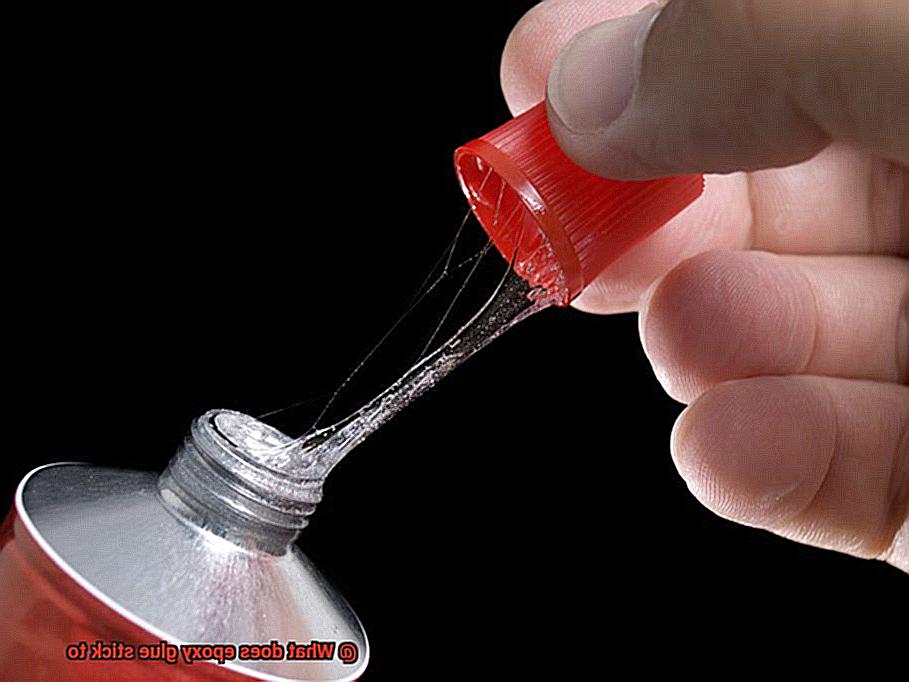
Epoxy glue is the adhesive of choice for many DIY projects, construction jobs, and industrial settings. It’s known for its strength, durability, and resistance to water, heat, and chemicals. But did you know that there are several types of epoxy glue available on the market? Let’s dive into them.
One-Part Epoxy Glue
This type of epoxy glue is pre-mixed and ready to use straight out of the tube. It’s perfect for small projects and repairs and can bond various materials.
Two-Part Epoxy Glue
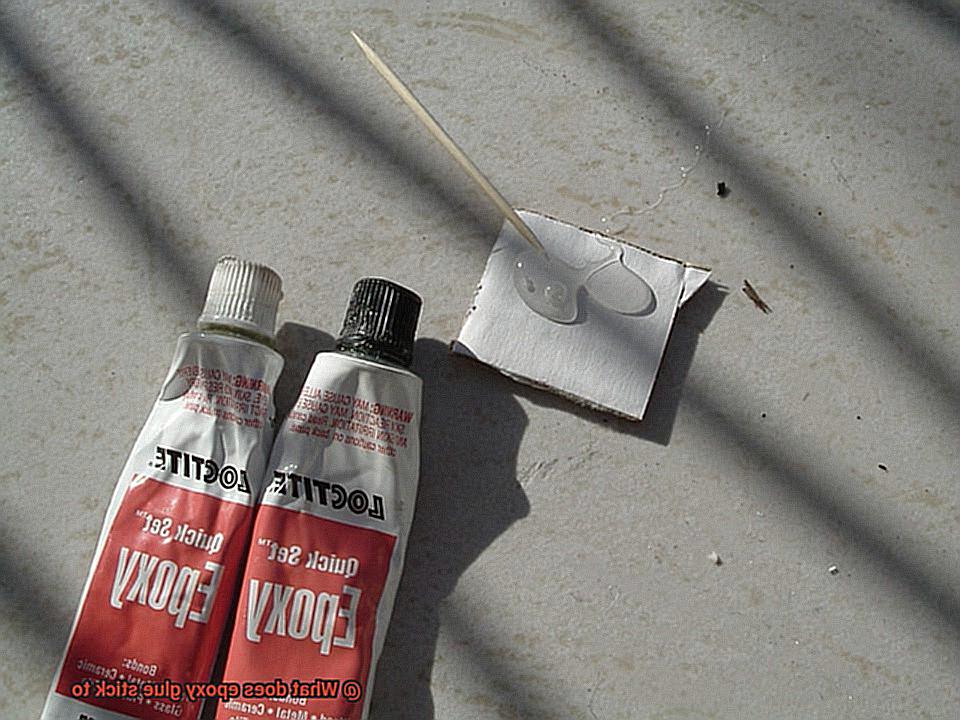
Consisting of a resin and a hardener that must be mixed, this type of epoxy provides a strong and durable bond that can withstand high-stress applications. It’s commonly used in construction, automotive repair, and industrial settings.
Structural Adhesive Epoxy
This type of epoxy is designed explicitly for bonding load-bearing parts and structures. It provides excellent strength and durability and can withstand high temperatures and harsh environments.
Flexible Epoxy Glue
If you need to bond flexible materials such as rubber or leather, this type of epoxy is perfect. After curing, it remains flexible and can absorb vibration and movement without cracking or breaking.
Clear Epoxy Glue
Transparent epoxy glue is ideal for bonding glass, ceramics, and plastics. It dries clear and can be sanded or painted over, making it versatile for various projects.
Rapid-Set Epoxy Glue
When time is short, rapid-set epoxy glue comes to the rescue. This type of epoxy sets in just a few minutes, making it ideal for emergency repairs or time-sensitive projects.
Specialized epoxies also exist, such as heat-resistant epoxy that can withstand high temperatures, marine-grade epoxy that can withstand water exposure, and food-safe epoxy that is safe to use on surfaces that come in contact with food.
Tips for Working with Epoxy Glue
When working with epoxy glue, there are a few tips and tricks that can help you achieve a successful bond. To get started, it’s essential to prepare your surfaces thoroughly before applying the glue. This means cleaning them thoroughly with a solvent such as alcohol or acetone to remove dirt and debris. Any contaminants or moisture can negatively impact the bonding process.
Once you’ve prepared your surfaces, it’s time to mix the two parts of the epoxy glue thoroughly. Be sure to follow the manufacturer’s instructions and mix the epoxy for the recommended length of time. Mixing the epoxy in small batches can also help ensure that it sets properly and doesn’t harden too quickly.
When it comes to applying the glue, less is often more. Using just enough to create a strong bond without creating a mess is key. Apply even pressure when bonding surfaces together, using clamps or weights if necessary. This will help ensure that the two surfaces are firmly connected and will create a strong bond.
Once you’ve applied the epoxy glue, it’s crucial to give it time to dry properly. The drying time can vary depending on the type of epoxy glue being used and the humidity and temperature of your environment. It’s recommended to let the bond cure for at least 24 hours before subjecting it to any stress or load.
Finally, clean up any excess glue before it dries. Once it has hardened, removing it can be difficult and may damage the surfaces that have been bonded together. A little bit of rubbing alcohol or acetone can help dissolve any excess glue before it hardens.
Common Uses for Epoxy Glue
This versatile product has a wide range of practical applications, making it a popular choice in many industries and for DIY projects around the home.
Let’s start with the construction industry. Epoxy glue’s ability to bond to concrete, metal, and wood makes it an essential tool for building projects. It can be used for everything from securing fixtures to bonding beams, making it a reliable adhesive for construction workers.
Moving on to the automotive industry, epoxy glue is frequently used to repair damaged parts and bond body panels together. Its resilience and durability make it an ideal choice for this type of application.
If you love spending time on the water, epoxy glue is also a popular choice in the marine industry. It can withstand saltwater and other harsh environments, making it perfect for repairing boats and watercraft.
In the arts and crafts industry, epoxy glue is a go-to adhesive for bonding various materials such as glass, metal, and wood. This adhesive is perfect for creating decorative items like jewelry and picture frames.
Finally, epoxy glue is also a lifesaver for DIY projects around the home. Whether you’re repairing household items like ceramics or plastic or fixing fabric, epoxy glue can come to the rescue.
DpDKTqnesMI” >
Also Read: How to Glue Fiberglass to Metal?
Conclusion
In conclusion, epoxy glue is a true jack-of-all-trades adhesive that can bond almost anything. Its unparalleled bonding abilities make it the adhesive of choice for DIY enthusiasts and home improvement pros alike. Epoxy glue consists of two parts: resin and hardener, which when combined, create a chemical reaction that results in an incredibly strong and durable bond. This adhesive is known for its resistance to impact, vibration, and temperature changes. Additionally, it’s waterproof and resistant to chemicals and solvents.
Epoxy glue can adhere to various surfaces such as wood, plastic, metal, glass, ceramics, and even some types of fabric. However, not all surfaces are created equal – some may require special preparation before applying the adhesive. Surface preparation is crucial when using epoxy glue; the surfaces being bonded must be clean and free from any debris or contaminants to ensure maximum adhesion.
When applying epoxy glue, following the manufacturer’s instructions carefully is essential. The two components must be mixed in the correct proportions and applied within a specific timeframe before the glue sets. Any disturbance during the curing time can weaken the bond.
The benefits of epoxy glue are numerous: strength, durability, versatility, resistance to water/chemicals/temperature changes and long working time. There are several types of epoxy glue available on the market like one-part epoxy glue (pre-mixed), two-part epoxy glue (consisting of resin and hardener), structural adhesive epoxy (for load-bearing parts), flexible epoxy glue (for flexible materials), clear epoxy glue (transparent) and rapid-set epoxy glue (sets in minutes).
In summary, whether you’re renovating your home or fixing a broken item in your garage or workshop, you can count on epoxy glue to create a long-lasting bond between various materials with ease if used properly following all instructions carefully.


